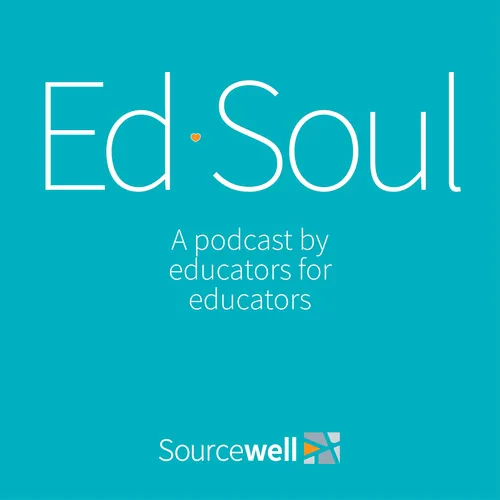Regulating: Ready to Learn & Ready to Teach Part 1
- Author
- Lisa Worden
- Published
- Thu 09 Jun 2022
- Episode Link
- None
In this two-part episode, we discuss strategies to regain and retain regulation - improving conditions for learning and teaching
What is social and emotional learning?
Students and adults acquiring and applying skills
- Being aware of yourself (feelings, tendencies)
- Managing that (behavior)
- Being aware of others and using that to build relationships & interact
- Making decisions
SEL boils down to how we are with ourselves, each other, and the world around us. SEL isn’t necessarily something extra; educators already spend time on behaviors. SEL can be a tool or support to manage behaviors effectively and efficiently, so even more learning can happen.
Sometimes people ask, why focus on SEL when school is about academics?
If students aren’t ready to learn and teachers aren’t ready or well enough to teach, learning is hindered. When SEL is implemented, there is an 11% gain in academic scores.
How does regulation fit into our conversation about increased student incidents (school threats, self-harm, racism)?
We’ll talk about adult regulation, but let’s start with students.
Sometimes we look at SEL as a way to fix students. Instead, we need to shift our thinking to view SEL as a way to support students. Consider supports we provide for students when they don’t know how to read, or do fractions, or play an instrument. We teach them how (we don’t punish them) and we provide additional supports if progress isn’t made. Sometimes we assume students should come to school knowing how to organize their stuff, handle frustration, manage time, and get along with others. Students need opportunities to learn and practice those skills, too.
We want students to manage themselves – regulate their feelings. The first step is being able to identify their own feelings, both positive and difficult. Let’s be honest, we are especially interested in students regulating feelings that seem to cause disruptions, like frustration and anger, and behaviors like not handing in work, disorganization or disengagement.
Let’s talk about the brain.
To identify feelings, we need to talk a bit about the brain. Dan Siegel’s Hand Model of the Brain helps us understand the fight, flight, and freeze (FFF) response.
- FFF is a natural process that happens in healthy brains with real danger.
- Brains prone to anxiety, affected by trauma, or even stressed, can flip a lid (dysregulate) more easily.
- Imagine a compromised, raised level of awareness - my lid isn’t flipped, but I’m closer to it than I want to be or should be. Many of us exist in this state, especially right now.
Trauma is a big topic for another time, but a few disclaimers:
- In general, exposure to trauma (real danger) wires the brain to protect but not connect, survive but not thrive.
- The great thing about neuroplasticity is that recovery and healing from trauma is possible, even as adults.
- Sometimes schools are the place where students experience trauma (institutional trauma).
See all the strategies we discussed in Handout-S1 Episode 2.
Find more educational resources by topic at https://www.mn.sourcewell.org/education/podcast
Learn more about upcoming trainings and events for educators at www.mn.sourcewell.org/education
